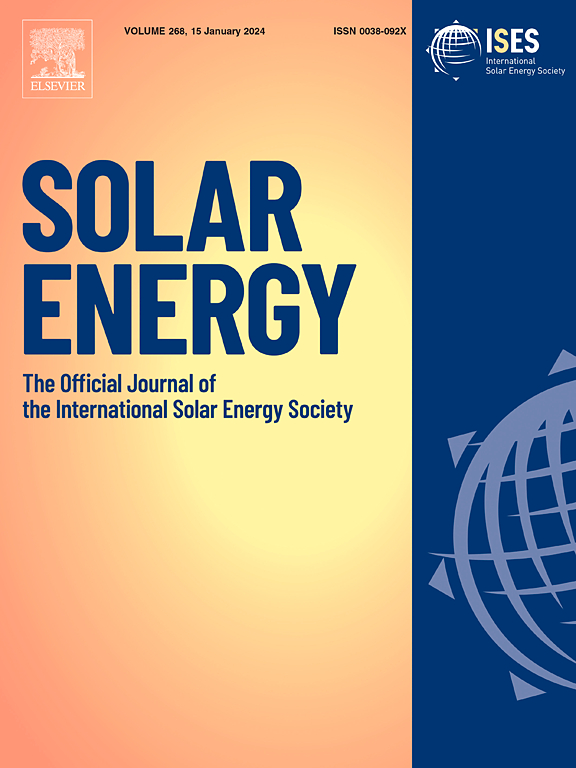Thermal and electrical performance analysis of nanofluid beam splitting PV/T system based on full coupling of light heat and electricity
IF 6
2区 工程技术
Q2 ENERGY & FUELS
引用次数: 0
Abstract
Optimizing the system structure and introducing beam splitting technology are effective strategies for enhancing the operational performance of concentrating solar photovoltaic/thermal (PV/T) systems. In this study, a two-stage concentrating PV/T system based on beam splitting is proposed, and the system is analyzed using a fully coupled optical-thermal-electrical method. First, the reliability of the established discrete ordinates (DO) radiation model is verified using the Monte Carlo Ray Tracing (MCRT) method. Next, the obtained quantitative results are applied as a volumetric heat source in a 3D flow heat transfer model. Finally, the operational characteristics of the two-stage concentrating nanofluid PV/T system under various operating conditions are investigated parametrically. The results demonstrate that the radiative fluxes obtained from the 2D DO radiation model are in good agreement with those derived from the MCRT method. Under the series operating condition of the 3D flow heat transfer model, the electrical efficiency of the PV subsystem is 22.13 %, the thermal efficiency of the integrated system is 71.85 %, and the exergy efficiency is 20.77 %, with a nanofluid inlet temperature of 25 °C and an inlet mass flow rate of 0.03 kg/s. This study also evaluates the system’s operating efficiency under series and parallel configurations, showing that the series configuration achieves higher exergy efficiency, while the parallel configuration enhances the thermal efficiency of the system.
求助全文
约1分钟内获得全文
求助全文
来源期刊

Solar Energy
工程技术-能源与燃料
CiteScore
13.90
自引率
9.00%
发文量
0
审稿时长
47 days
期刊介绍:
Solar Energy welcomes manuscripts presenting information not previously published in journals on any aspect of solar energy research, development, application, measurement or policy. The term "solar energy" in this context includes the indirect uses such as wind energy and biomass
 求助内容:
求助内容: 应助结果提醒方式:
应助结果提醒方式:


